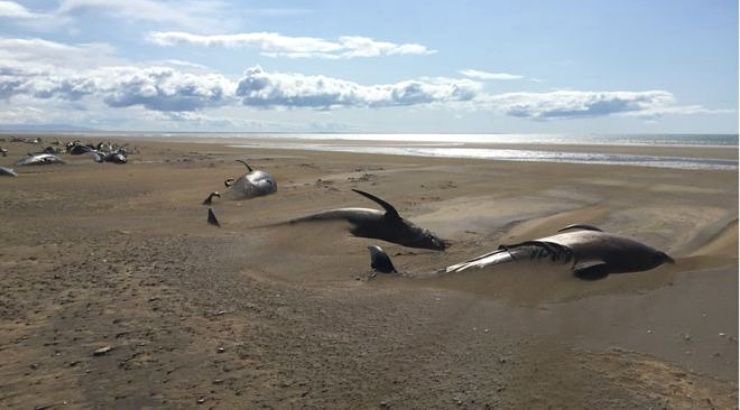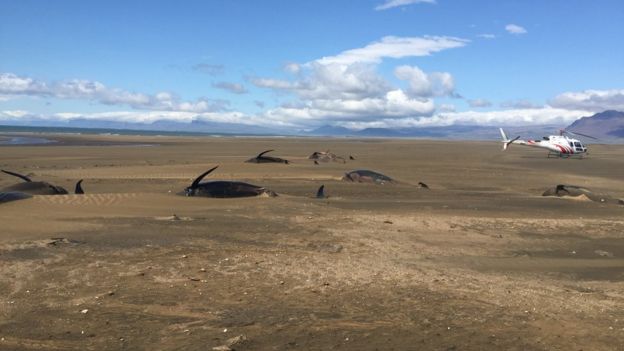(TMU) — Once again, dozens of dead whales have washed ashore. This time, the beached pilot whales were spotted by a helicopter flying over western Iceland.
According to the BBC, the mammals were noticed by sightseers who were flying over a beach at Longufjorur. It is unclear how the mammals beached themselves, as the region is secluded and difficult to reach by car. According to local media, police in the nearby town of Stykkisholmur have been made aware of the discovery.

The sobering images were taken by helicopter pilot David Schwarzhans. He said:
“We were flying northbound over the beach and then we saw them. We were circling over it not sure if it was whales, seals or dolphins. We landed and counted about 60 but there must have been more because there were fins sticking out of the sand.”
“It was tragic and when we stood downwind it was smelly,” he added. “It wasn’t something nice to see and quite shocking since there were so many.”

According to marine biologist Edda Elisabet Magnusdottir, the mammals become disoriented when they enter shallow water. She told Iceland Monitor, “most of them have a tendency to become disorientated.” She added that the mammals typically swim in tight groups, which is why so many of them became stranded at once.
This isn’t the first time a mass stranding has made headlines. In late 2018, over 140 pilot whales were found beached on an island in New Zealand. Half of the whales were dead by the time they were discovered and the other half had to be put down as saving them was too costly and difficult.
The cause of cetacean stranding, or “beaching,” is a phenomenon that isn’t entirely understood. The leading theory is that whales are confused by mid-frequency active sonar and, as a result, migrate to shallow waters. If disoriented, they may end up on land. From there, the most common causes of death include dehydration, collapsing under their own weight, or drowning when the high tide covers the blow hole.






